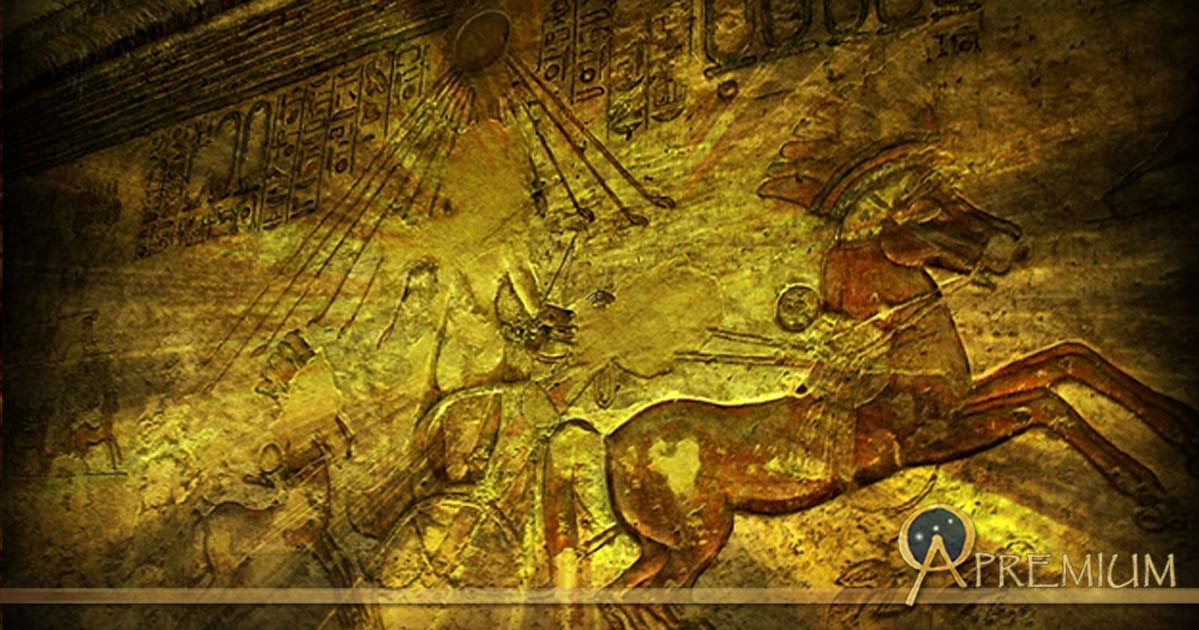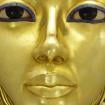Dark Forces Conspire to Destroy the Radiant One: The Assassination of Akhenaten—Part II
Akhenaten’s religious experiment, which was launched in the imperial capital Thebes and later nurtured in the new city Akhetaten, resulted in dramatic changes. Not only did the king oust the panoply of traditional gods – with Amun becoming the prime object of hatred – but he also instilled a deep sense of fear and confusion in the hearts of the populace and priesthood. The pharaoh’s actions were deemed dangerous, fanatical and detrimental to the nation’s interests. Were these the reasons that ultimately propelled his enemies to bring about his end?

Marked by a grotesque, at times startling, artistic convention; androgynous depictions of Akhenaten in colossal statuary were the result of his religious philosophy that sought to assimilate and embody both male and female characteristics. In short: The Pharaoh wished to be seen as the Creator of Life. From Karnak. Egyptian Museum, Cairo.
Of Gold and God’s Wives
During the New Kingdom, Egypt’s temples grew fabulously wealthy, thanks to a significant portion of the war booty and taxes, among other sources of revenue that were donated to the treasury of the state god Amun. Regular tributes of precious metals, livestock and slaves from subjugated realms made the temples powerful; and the high priest at Karnak rivaled the king’s prestige. By the time of Amenhotep III, Amun-Ra’s priests had become a state within a state and were perhaps within range of imperiling the supremacy and sanctity of the crown. Nebmaatre’s exceeding attention to the Aten was his way of countering their influence.

Painted limestone relief with cartouches of the Aten. Probably originally from Amarna (Akhetaten), but discovered at Hermopolis (Ashmunein). Metropolitan Museum of Art, New York.
But pharaohs, particularly in the Eighteenth Dynasty, seem to have always had trouble dealing with the overweening ambitions of the clergy. Egyptological researcher, Kevin Robinson, notes: “Several extant papyri dating to the reign of Ramesses VI list the taxable income and general holding of land throughout Egypt. The amount in temple hands rivalled the pharaohs’ holdings; and it has been estimated that by the reign of Ramesses XI they controlled more than a third of productive land.”

The sun briefly set on Karnak Temple and the Amun clergy when Akhenaten assumed the reins of power. Those were dark days when the iconoclast spared no effort to erase the memory of the state god—only for his policies to ultimately backfire on him.
Attempts were made by a succession of monarchs to subtly warn the priests against harboring illusions of grandeur. The position of "God's Wife of Amun" was brought into focus for this very reason, as Egyptological scholar, Keith Payne, explains: “When Ahmose I foresaw the growing power of the Amun priesthood, he revived the position of "God's Wife of Amun" but with powers and wealth that made it virtually a new position. With the "Donation Stela," he essentially bought the position of Second Priest of Amun, and melded it with the position of God's Wife—which was conveniently held by his wife. So, Ahmose-Nefertari, the first Queen of the Eighteenth Dynasty, was basically second in command in the Priesthood, and the Donation Stele assured the position came with enough wealth to be self-sufficient.
The position of God's Wife put the regal thumbs-down on the Amun clergy, it was virtually a royal presence within the temple.” The wording of the stele sent a clear message; the priesthood were the "servants" of Amun, and Ahmose I reiterated that this decision was made "in the majesty of the palace," not whilst bowing low in some temple.

Richly colored fragments of a Sedan Chair show the deified Queen Ahmose-Nefertari seated alongside her deified son Amenhotep I. Museo Egizio, Turin, Italy.
Concurring with this observation noted Egyptological expert, Brian Alm, states: “Theoretically, the chief duty of the God’s Wife of Amun was to arouse the god, who would reciprocate by keeping Egypt fertile and maintaining the cyclical eternity of the universe (neheh) forever (djet-ta). At least, that was the official story. In practicality, the office ultimately was a means for the pharaoh to keep a lid on the Amun priesthood in Thebes…
Like this Preview and want to read on? You can! JOIN US THERE ( with easy, instant access ) and see what you’re missing!! All Premium articles are available in full, with immediate access.
For the price of a cup of coffee, you get this and all the other great benefits at Ancient Origins Premium. And - each time you support AO Premium, you support independent thought and writing.
- Was the Heretic Pharaoh Akhenaten in Fact the Father of Modern Monotheism?
- The Hunt for Ankhesenamun: How Did a Young Woman Stop an Ancient Dynasty from Imploding?
- Eclipse over Amarna: Beginning of the End for Akhenaten in his City of Light?
Independent researcher and playwright Anand Balaji, is an Ancient Origins guest writer and author of Sands of Amarna: End of Akhenaten.
--
Top Image: Dark forces conspired in Ancient Egypt. Egyptian relief, design by Anand Balaji. (Photo credits: Heidi Kontkanen);Deriv.
By Anand Balaji




















